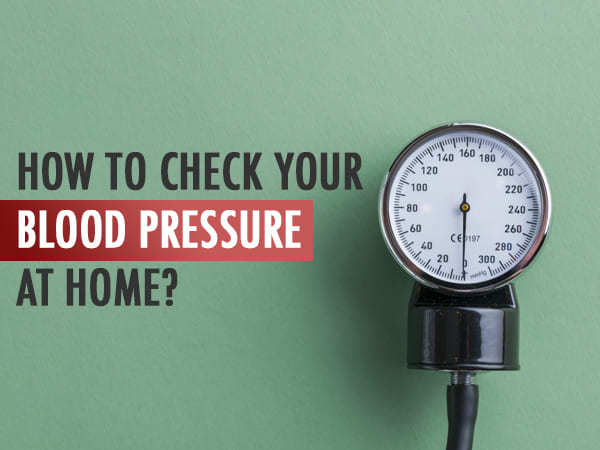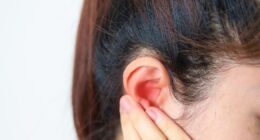Wellness
oi-Neha Ghosh
on September 1, 2020
The heart supplies blood to the body’s organs and tissues. When the heart beats, it pumps blood into the large blood vessels of the circulatory system. As the blood flows through the body, it puts pressure on the walls of the blood vessels, known as blood pressure [1].
This blood pressure occurs as a result of two forces: systolic blood pressure and diastolic blood pressure. Systolic blood pressure is the pressure of the blood exerted into the blood vessels as the heart contracts to pump blood. Diastolic blood pressure is the pressure of the blood on the blood vessels when the heart rests between beats.
When the pressure of the blood pushed against the walls of the blood vessels is consistently too high it causes high blood pressure (hypertension) [2]. It typically develops over the course of years and it often goes unnoticed because many people won’t experience any symptoms. Only when the condition becomes severe, the symptoms are noticed. Overtime, high blood pressure elevates the risk of heart attack, stroke, heart and kidney failure.
If you have high blood pressure, your doctor may recommend you to check your blood pressure daily at home. Monitoring your blood pressure at home can help keep a tab on your blood pressure. And before you start, it is important to know the right way to check your blood pressure at home.

How To Measure Blood Pressure At Home
Blood pressure is a measure of the amount of force the blood exerts on the blood vessels. It is measured in units of millimetres of mercury (mmHg) and the readings are given as two numbers. The upper number comes first which is called systolic blood pressure and the second number below it is called diastolic blood pressure [1].
For example, if your blood pressure reading is 132/88 mmHg. It means the systolic pressure is 132 and diastolic is 88.
Blood pressure is measured at the same time everyday and when you are at rest [3]. Also, when you are measuring your blood pressure for the first time, it is better to measure it in both the arms for accuracy [4].
Guidelines to follow before checking your blood pressure
- Select a calm and quiet place to check your blood pressure as you will need to listen to your heartbeat clearly. Do not sit in a cold room.
- Keep yourself comfortable and relaxed and urinate before checking your blood pressure.
- If you are wearing full-sleeve clothing, roll up the sleeve on your arm. The cuff should be placed on the bare skin.
- Sit on a chair with a table next to it for 5 to 10 minutes. Keep your back straight and rest your forearm comfortably on the table with the palm of your hand facing upwards.

Guidelines to follow while checking blood pressure
The following steps should be considered if you are checking your blood pressure with automated blood pressure machines or manually with a sphygmomanometer.
Automated blood pressure machines [5]
READ RELATED: Long fingernails loved by Cardi B could be harboring dozens of bacteria and fungi species
These machines are easy to use and it measures blood pressure accurately. The automated blood pressure machine has a digital monitor with an upper arm cuff that will show your blood pressure reading on a screen.
To use the automated blood pressure machine, follow the instructions in the booklet that comes with it. Also, machines can give you a different reading sometimes, so write down your blood pressure readings in a notebook and show it to your doctor when you go for your next appointment. Your doctor will check your blood pressure manually so that you can compare the readings.
Here’s how to use an automated blood pressure machine:
- Hold the bulb in your right hand and press the power button. After which all the display symbols will appear followed by a zero. Your monitor is ready for use.
- Pump up the cuff by squeezing the bulb with your right hand.
- Watch the gauge and keep on pumping up the cuff until the gauge reads 30 mmHg above your normal blood pressure.
- Sit quietly and watch the monitor as the readings will appear on the screen.
- Wait for a long beep, which means the blood pressure measurement is over. After which, allow the cuff to deflate.
 10 Effective Home Remedies For Low Blood Pressure (Hypotension)
10 Effective Home Remedies For Low Blood Pressure (Hypotension)

Sphygmomanometer
To check your blood pressure manually, you’ll need a sphygmomanometer, a blood pressure cuff with a squeezable balloon, aneroid monitor and a stethoscope [6].
Here’s how to use a sphygmomanometer:
- Sit comfortably and relaxed with the arm resting on the table.
- Place the cuff on your bicep and squeeze the balloon to pump up the cuff.
- Watch the aneroid monitor and pump up the cuff to about 20-30 mm Hg above your normal blood pressure.
- Once the cuff is pumped up, place the stethoscope inside the elbow crease under the cuff.
- Slowly deflate the balloon. Listen through the stethoscope and when you hear the first heart beat, note the number down displayed on the aneroid monitor. This is the systolic blood pressure.
- Continue listening until the steady heart beat sound stops and note down the number from the aneroid monitor. This is the diastolic blood pressure.
Note: The instructions for use may differ with each machine, so follow the instructions carefully to ensure that it is working properly.

What Does Your Blood Pressure Reading Denote?
In adults, blood pressure is considered normal if the systolic value is below 140 mmHg and diastolic value is below 90 mmHg. If the systolic value is above 140 mmHg and diastolic value is above 90 mmHg, you have high blood pressure [1].
Consult your doctor to help you manage your blood pressure levels.
GET THE BEST BOLDSKY STORIES!
Allow Notifications
You have already subscribed
Source:



 13 Ways To Lower High Blood Pressure Naturally
13 Ways To Lower High Blood Pressure Naturally






